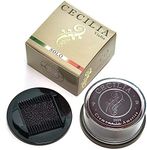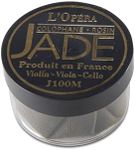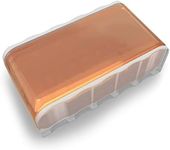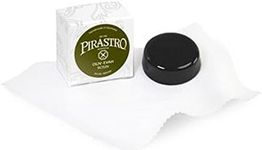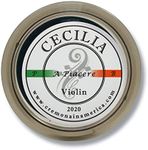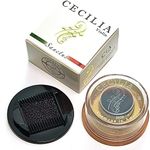Buying Guide for the Best Violin Rosins
Choosing the right violin rosin is essential for achieving the best sound quality and playability from your instrument. Rosin is a sticky substance applied to the bow hair to create friction between the bow and the strings, allowing the violin to produce sound. The type of rosin you choose can significantly impact your playing experience, so it's important to understand the key specifications and how they relate to your needs as a player.HardnessRosin comes in different levels of hardness, typically categorized as hard, medium, or soft. Hard rosin is less sticky and produces a smoother, more focused sound, making it ideal for warmer climates and for players who prefer a cleaner tone. Medium rosin offers a balance between grip and smoothness, suitable for a wide range of climates and playing styles. Soft rosin is stickier and provides more grip, which can be beneficial in colder climates or for players who need more traction on the strings. To choose the right hardness, consider your playing environment and the type of sound you want to achieve.
Dust ProductionDifferent rosins produce varying amounts of dust when applied to the bow. Low-dust rosins are preferable for players with allergies or respiratory sensitivities, as they minimize the amount of airborne particles. High-dust rosins, while potentially messier, can provide a stronger grip on the strings. If you are sensitive to dust or prefer a cleaner playing environment, opt for a low-dust rosin. Otherwise, you may choose based on the level of grip you need.
GripThe grip of the rosin affects how well the bow hair can catch the strings and produce sound. A stronger grip can help produce a louder, more powerful sound, which is useful for solo performances or playing in large ensembles. A lighter grip allows for more nuanced, delicate playing, which is ideal for chamber music or solo practice. Consider your playing style and the type of music you perform when selecting a rosin with the appropriate level of grip.
IngredientsRosin can be made from different ingredients, including natural tree resins and synthetic compounds. Natural rosins are often preferred for their traditional sound and feel, while synthetic rosins can offer more consistency and less sensitivity to temperature and humidity changes. Some rosins also include additives like metals (e.g., gold, silver) to enhance certain tonal qualities. If you prefer a traditional sound, go for natural rosin. If you need more consistency or play in varying conditions, consider synthetic options.
ColorRosin color can range from light amber to dark brown. Light-colored rosins are typically harder and less sticky, producing a brighter, more focused sound. Dark-colored rosins are softer and stickier, providing a warmer, richer tone. The choice of color can also be influenced by the type of strings you use; for example, gut strings may pair better with darker rosins, while synthetic or steel strings might work well with lighter rosins. Choose the color based on the tonal quality you desire and the type of strings on your violin.


![Rosin, Violin Rosin [6 Pack] Cello](https://images-proxy.bestreviews.guide/VOCiKvnQebaq3lo2as2_WzG-f0U=/0x150/https://m.media-amazon.com/images/I/51sy06SyX7L._AC_CX679_.jpg)

